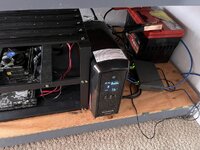I have a few CyberPower UPS for the churches where I support the WIFI. I am moving away from the CyberPower because of them not restarting after a power failure. Like you describe. I also found it hard to tell what the actual condition of the battery was as the battery aged.
I have replaced some of the CyberPower with APC SmartConnect. I get email notifications about what is going on with the UPS.
In some cases the replacement batteries are near the cost of the UPS.
I have replaced some of the CyberPower with APC SmartConnect. I get email notifications about what is going on with the UPS.
In some cases the replacement batteries are near the cost of the UPS.

